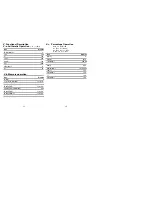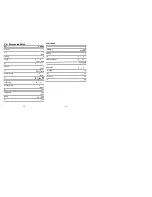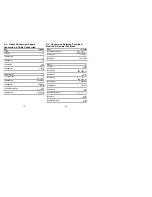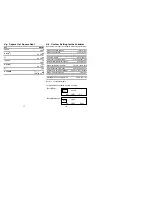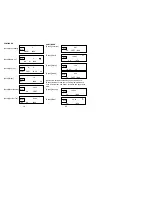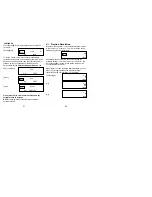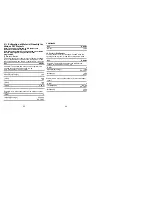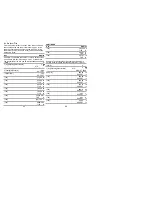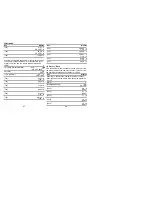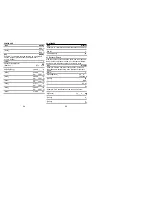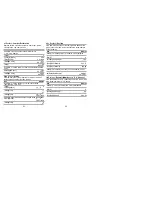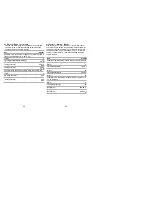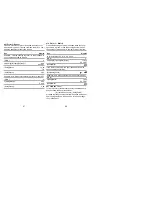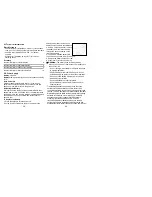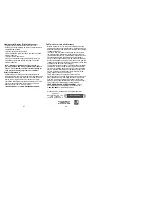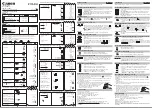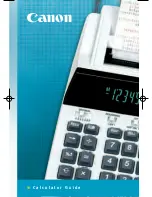
39
40
VI. Technical Information
Error Messages
• Calculation error ( displayed as “CAL Err” ) for the cases
such as 1 ÷ 0 or finding square root for negative numbers
• Overflow error ( displayed as “OFLO” ) for answer
overflow
• Syntax error ( displayed as “Syn Err” ) for unit non
matching cases
Accuracy
VII. Power Supply
Battery
: CR2032
Battery Life
: Approximately 4000 hours continuous display
of “0”.
Auto Power Off
Estimator power automatically turns off if you do not
perform any operation for about six minutes. When this
happens, press [ON/C] to turn the power on.
Replacing the Battery
Dim figures on the display of the estimator indicate that
battery power is low. Continued use of the estimator when
the battery is low can result in improper operation. Replace
the battery as soon as possible when display figures
become dim.
To Replace the Battery:
1. Press [Shift][Off] to turn the power off.
2. Using a small screwdriver, remove the screw in the
Number of digits for normal display:
8
Number of digits for numerator display: 2
Number of digits for denominator display: 2
Number of digits for internal calculation: 10
battery compartment door and the
battery door as shown in the illustration.
3. Using a small screwdriver, remove
the battery from the recessed area
through the access opening on the
right of the battery.
4. Load a new CR2032 battery into
the unit with its positive side (+) facing up.
5. Replace the battery door and screw.
6. Press [ON/C] to turn the power on.
WARNING:
The battery used in this device may
present a risk of fire or chemical burn if mistreated. To
reduce this risk:
• Do not recharge, disassemble, incinerate or expose
to high temperatures.
• Replace battery with model CR2032 only. Use of
another battery may present a risk of fire or explosion.
• Dispose of used battery promptly per local codes.
• Keep away from children.
• Do not disassemble or short terminals.
• Remove battery if the device will not be used for
several months.
Transporting batteries can possibly cause fires if the
battery terminals inadvertently come in contact with
conductive materials such as keys, coins, hand tools and
the like. The US Department of Transportation Hazardous
Material Regulations (HMR) actually prohibit transporting
batteries in commerce or on airplanes (i.e. packed in
suitcases and carryon luggage) UNLESS they are
properly protected from short circuits. So when
transporting individual batteries, make sure that the
battery terminals are protected and well insulated from
materials that could contact them and cause a short circuit."

